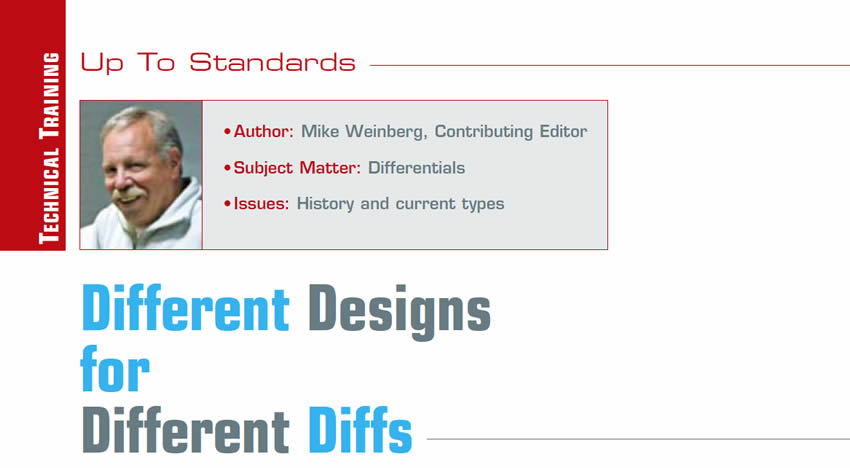Controls Make Shifts Happen in Milliseconds
If you have been following the previous chapters of this series of articles, you are starting to understand the function of dual-clutch transmissions. We have used illustrations from the VW Direct Shift Gear Box (DSG) as VW has about 2 million of these units on the road at present.

The Beauty of Having Two Separate Gear Sets
In last month’s article, we began to study the dual-clutch transmission, looking at its potential to eventually replace the common torque converter-planetary automatic transmission. In this chapter, we will look at the mechanical theory of operations on how these gear boxes work. We will be using illustrations from VW and Audi who were the first to mass market this design in 2003, in the Audi TT and VW Golf models.
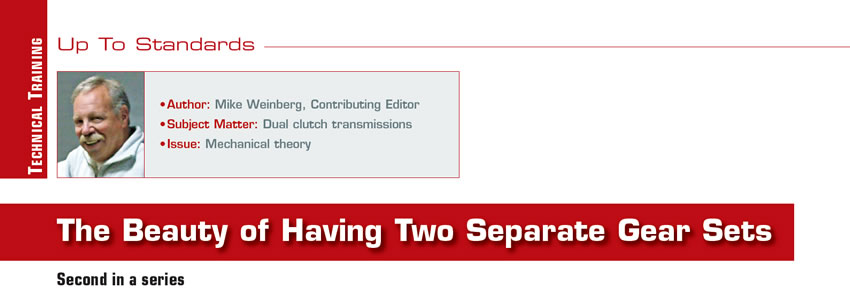
Dual Clutch Transmissions: Are They the End of the Torque Converter?
We have enjoyed two major designs of transmissions for many years. The manual transmission where the driver disconnected the power flow from the engine to the transmission by stepping on the clutch pedal and manually moving the shift lever from the present gear to the next gear to be selected.
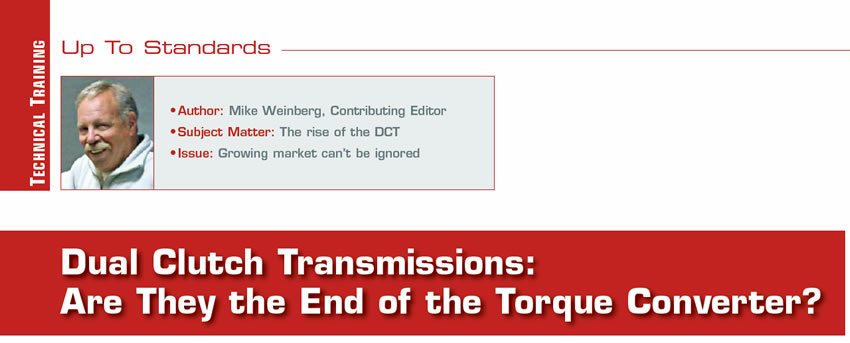
The New Year: It Will Be As Good As We Make It
Note: Mike Weinberg wrote this new-year outlook piece 10 years ago. Looking back to that time is instructive as it shows how business owners have endured tough times and how they must persevere in the same fashion going forward.
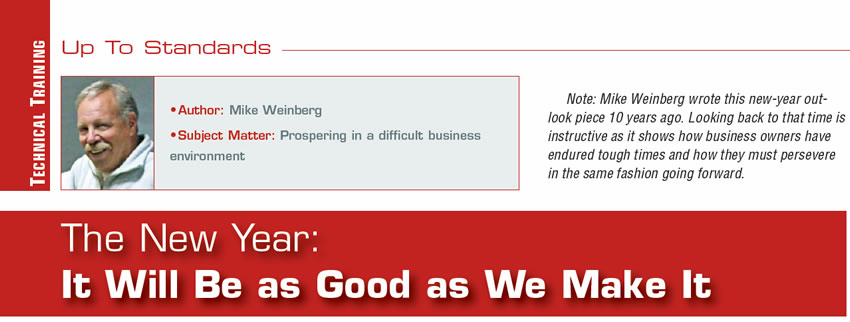
Litigation: It’s a Lawyer’s Nation
In business, it is very difficult and costly to operate in this regulatory minefield. It is also necessary to school yourself in operating a business properly to avoid litigation whenever possible. You are working on cars and trucks. The driver’s and passengers’ lives and well-being are in your hands. Any mistakes in repair procedures or defective parts can come back to haunt you and can become extremely expensive and time consuming to settle. You hear every day about automotive recalls that cost the manufacturers billions of dollars, such as defective airbags and faulty ignition switches that result in death and injury. The following are some tales from the past that may give you a better perspective on how to fine-tune your operations to avoid such disasters.

As industry evolves, invest in yourself
We have come to the end of another year, and it is time to reflect on how our industry is changing and how we must change and adapt to survive. There are many trends that have very direct effect on our bottom line and our future. The auto manufacturers control a tremendous amount of what affects our industry. They are building excellent cars that if properly serviced will give owners good service for a very long time. Fuel mileage and emissions levels have improved greatly, with the advent of hybrid and electric vehicles. Due to better design and manufacturing standards, cars do not break down as often as past models if the customer does the required maintenance. Longer warranty periods, self-diagnosis and service reminders are now built into many current vehicles.
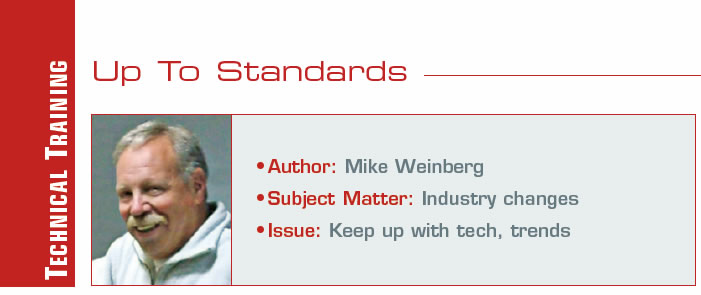
Full-Time & Selectable 4-Wheel Drives
2011 and later GM trucks equipped with four-wheel drives will be found with three different types of IFS (independent front suspension) front drive axles. There is an 8.25” ring gear and two different 9.25” ring gear front axles. The 8.25” and one of the 9.25” axles are the “suitcase” type of design using two aluminum case halves that bolt together containing the ring and pinion, differential carrier and other components. The other 9.25” unit is a Salisbury (Spicer design) with a one-piece case with a removable case cover, which is used in the 2500 and 3500 HD models. The aluminum split case design has been in use for many years and the 9.25” Salisbury type was introduced in 2011.

Warranty What We Give and What We Expect
If you are in the repair business you issue warrantees for the work you perform, and you also receive warrantees for the products you buy to perform your work. Warranty is defined in the dictionary as “a written guarantee of the integrity of a product and of the maker’s responsibility for the repair or replacement of defective parts.” Simple enough as a description, but in the real world you are governed by federal, state and local laws that have been written by nameless, faceless bureaucrats. These laws are the basis for all litigation that can arise from any set of circumstances.

Did You Hear That?
In my experience NVH, (engineering speak for noise, vibration, and harshness) is one of the more time consuming and difficult diagnostic situations. The manufacturers work extremely hard at ensuring that their automobiles have as quiet environment as possible inside the passenger compartment. They have to contend with road noise from the tires, air noises while the car is at speed, mechanical noises from the operation of the engine, driveline, and other components, noise due to weather, harmonic vibrations from various components, and increasingly sensitive consumers.
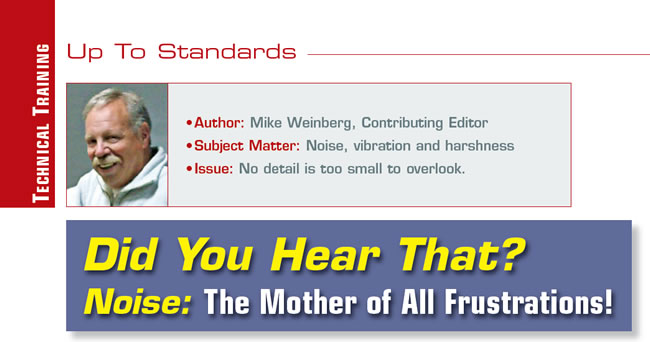
Looking at the New QuadraTrac
In 1973 Jeep introduced the QuadraTrac transfer case, designed and built by Borg Warner. Jeep, now part of Chrysler, which is now part of Fiat, trademarked the QuadraTrac name and continues to use it today. In 2011 Jeep introduced several new transfer cases for the Jeep Grand Cherokee models. There are three systems available providing 4-wheel drive: Quadra-Trac I, Quadra-Trac II Active on Demand, and Quadra-Drive II equipped with an Electronic Limited-Slip Differential (ELSD). This gives us three new transfer cases to learn about.
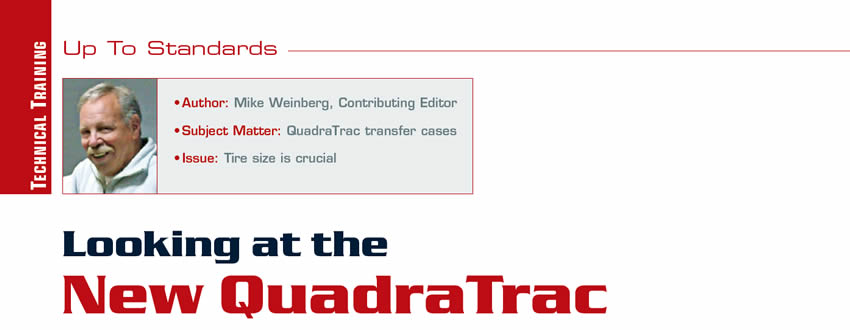
Repeat Problems and Failures
Gauging the traffic and the topics of calls we receive on our tech line make it obvious that many problems result from missed diagnostics and failure to view the issue as part of a complete vehicle system that must interact correctly. The simple truth in our daily routine is that the vehicles we service grow more complicated and complex by the day. Be careful of the quick “rush to judgment” when approaching any customer concern, as the urge to remove and inspect components internally in many cases focuses your attention on the “effect” instead of the cause.
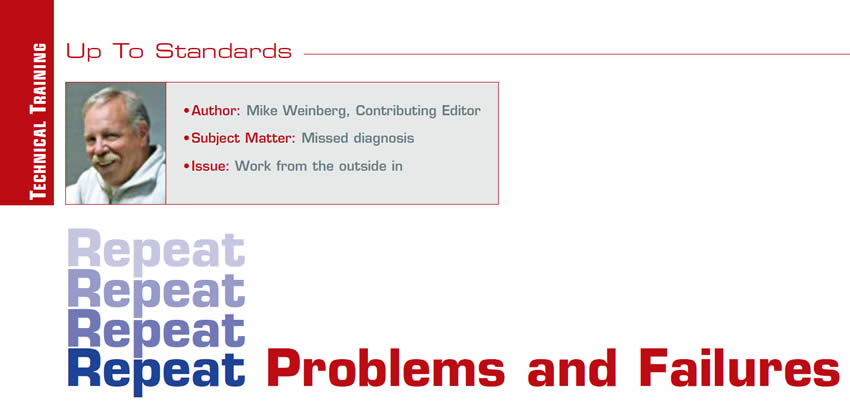
Different Designs for Different Diffs
We work on drivelines for a living. The transmission makes the torque created by the engine into a usable form through steps (gears), the lowest of which transmits the most usable torque, and the highest of which can transmit the most rotational speed. The transmission sends that power to a third member or rear end, or in front-wheel drive, a rear end contained inside the gear box, without a drive shaft. The rear end now transmits the power to the drive axles and wheels, making a 90° turn through the ring and pinion gears. Transmission gears and the rear-end ratios are matched to the power curve of the engine to provide the most fuel-efficient speeds. The ring gear is mounted to a differential carrier, or in many front-wheel-drive transmissions, a planetary-type of carrier. The differential is contained inside the carrier.
